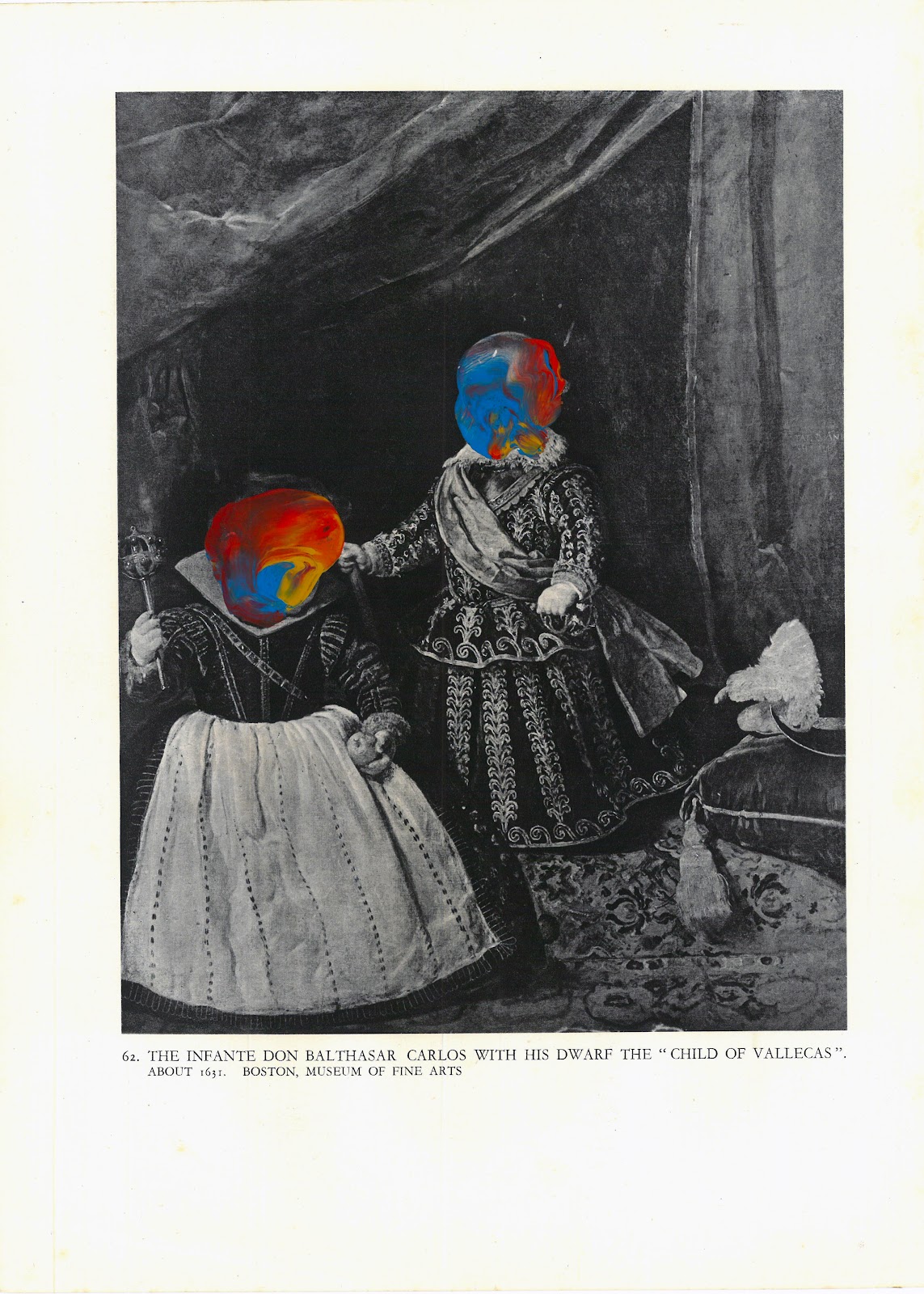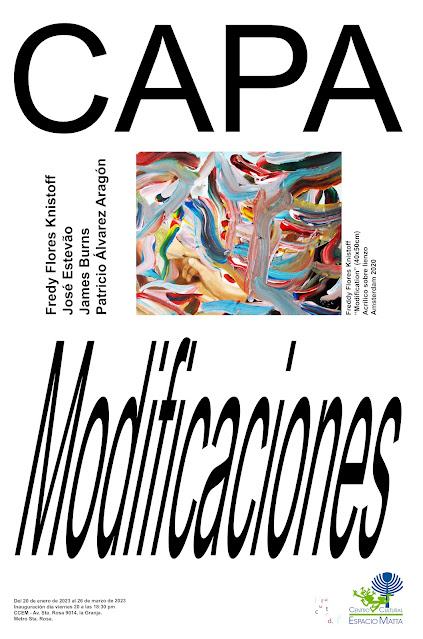[ENG]
From CAPA we are deeply happy to have the opportunity to inaugurate this magnificent exhibition of "painting on painting" proposals and to be able to dialogue with the work of our dearest Roberto Matta. The Espacio Matta houses one of the most important pieces of contemporary Chilean art and Universal Contemporary Art, the mural of "the first goal of the Chilean people." In addition to a large number of etchings and lithographic grades by Matta that take us back to the decade of the 70's of the 20th century and deal with topics such as the ties that were strengthened between the Cuban and Chilean people in the 70's, as well as other works of a more experimental nature and that were part of his series of "displaced objects" made in Florence that gave free rein to physical and psychic automatism for the construction of universal spaces, always making reference to the metamorphosis of the origin of creation. The space is a gigantic Museum in the shape of a bunker that was inaugurated in 2010 and was built precisely to preserve such a valuable mural that I have mentioned previously (and that can be seen in the subsequent images) and that Roberto Matta developed with great enthusiasm that led to the ascension of Salvador Allende. Regarding the support of this mural, we know that it was made on one of the walls that closed the municipal swimming pools of the commune of La Granja; a peripheral neighborhood of Santiago de Chile where culture basically did not reach and that Roberto Matta, following the ideas of solidarity that Salvador Allende's company intended, fulfilled to develop a magnificent collective work together with a group of students from the neighborhood and thus democratize art .
The "Espacio Matta" thus represents being a space full of history that acted as a new source of culture and to become an example for "the artistic colonization of the outskirts of Santiago". Aware of this, the CAPA Modificaciones exhibition was designed as a meeting space between the works of Roberto Matta and that of some artists from the "Collective Automatic Painting Amsterdam": Freddy Flores Knitoff, José Estevão, James Burns and Patricio Álvarez Aragón with the Special invitation from Bastiaan van de Welden (critic) and who are interested in the practice and investigation of a type of pictorial proposal called "Modification" and which greatly delves into a type of collaborative-conceptual painting. The exhibition exhibits 16 pictorial proposals of various dimensions and ranging from 30x30cm to 70x80cm. CAPA Modifications will be available in the central showroom of "Matta Space" until March 26, 2023.
Here are some photos from the exhibition:
[ESP]
Desde CAPA estamos profundamente contentos de tener la posibilidad de inaugurar está magnifica muestra de propuestas de "pintura sobre pintura" y poder dialogar con la obra de nuestro queridísimo Roberto Matta. El Espacio Matta alberga una de las piezas más importantes del arte contemporáneo chileno y del Arte Contemporáneo Universal, la obra mural de "el primer gol del pueblo chileno". Además de un gran número de aguafuertes y gradados litográficos de Matta que nos llevan de vuelta a la década de los años 70's del siglo XX y tratan temas como los lazos que se potenciaron entre el pueblo cubano y chileno en los años 70's, asimismo como otras obras de carácter más experimental y que formaron parte de su serie de "objetos desplazados" realizados en Florencia que daban rienda suelta al automatismo físico y psíquico para la construcción de espacios universales, siempre haciendo referencia a la metamorfosis del origen de la creación. El espacio es un gigantesco Museo en forma de bunker que se inauguró en el año 2010 y fue construido precisamente para conservar tan valioso mural que he citado anteriormente (y que se puede ver en las imágenes posteriores) y que Roberto Matta desarrolló con gran entusiasmo que suscitó la ascensión de Salvador Allende. En cuento al soporte de este mural, sabemos que fue realizado sobre uno de los muros que cerraban las piscinas municipales de la comuna de la Granja; un barrio periférico de Santiago de Chile dónde básicamente la cultura no llegaba y que Roberto Matta siguiendo las ideas de solidaridad que la empresa de Salvador Allende pretendía, cumplió para desarrollar una magnifica obra colectiva junto a un grupo de estudiantes del barrio y así democratizar el arte.
El "Espacio Matta" así representa ser un espacio lleno de historia que actuó como nuevo foco generador de cultura y para llegar a ser un ejemplo para "la colonización artística de las periferias de Santiago". Consientes de esto, la exposición de CAPA Modificaciones se trazó como un espacio de encuentro entre las obras de Roberto Matta y la de algunos artistas del "Collective Automatic Painting Amsterdam": Freddy Flores Knitoff, José Estevão, James Burns y Patricio Álvarez Aragón con la invitación especial de Bastiaan van de Welden (crítico) y que están interesados en la práctica e investigación de un tipo de propuesta pictórico que se llama "Modificación" y que ahonda en gran medida un tipo de pintura colaborativa-conceptual. La exposición exhibe 16 propuestas pictóricas de diversas dimensiones y que van desde los 30x30cm a los 70x80cm. Capa Modificaciones estará disponible en la sala de exposición central del "Espacio Matta" hasta el 26 de marzo de 2023.
A continuación algunas fotografías de la exposición:
























.jpg)








.jpg)










